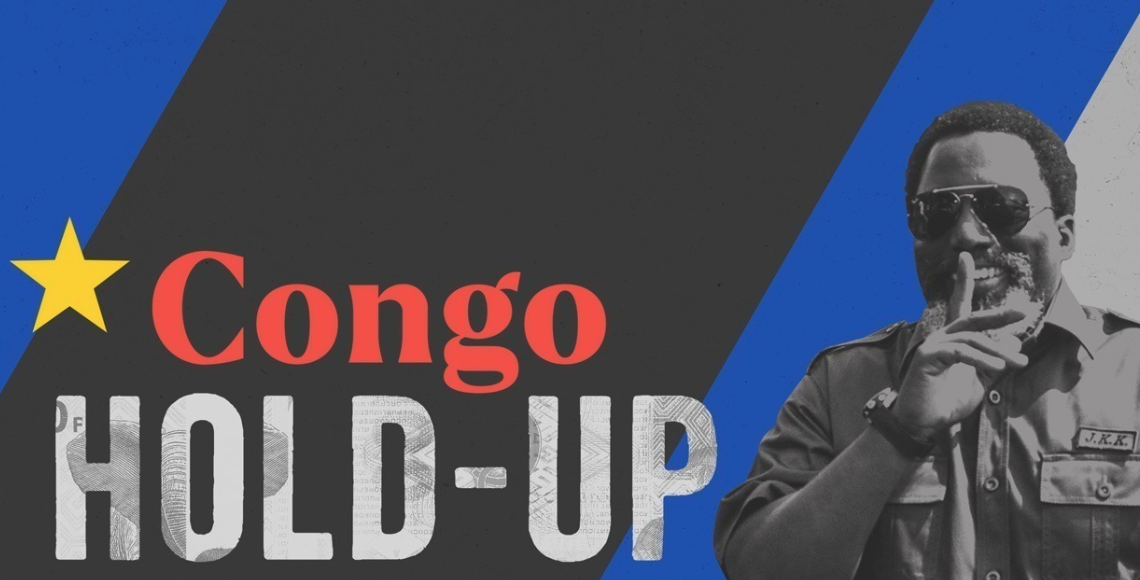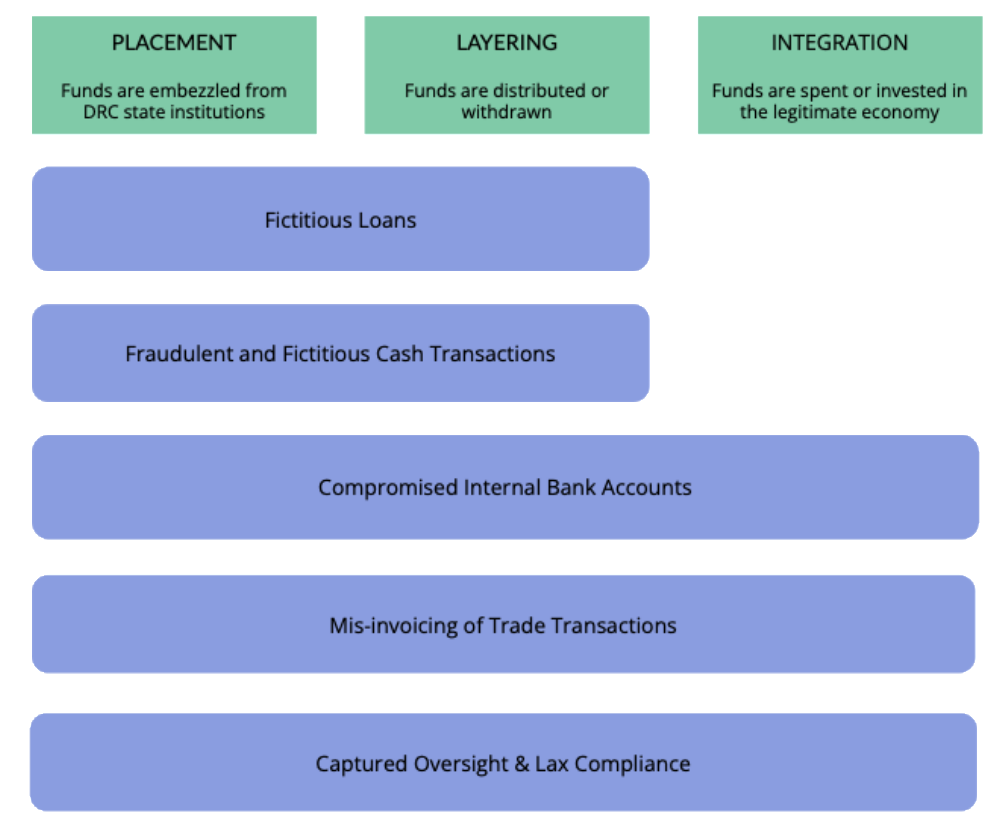
Michael Hornsby, Impact Manager at the Anti-Corruption Data Collective (ACDC), outlines findings from a recent policy brief co-authored with the Platform to Protect Whistleblowers in Africa (PPLAAF). The brief examines how BGFIBank DRC was used to move and disguise funds linked to politically exposed persons (PEPs), and outlines techniques associated with bank capture and possible policy responses.
“It’s a well-known saying in the sector, that the best way to launder money on a large scale is to own a bank,” says Anrike Visser, a policy advisor and consultant on illicit finance. “Or any other form of financial institution, for that matter.”
Visser was speaking at a recent ACE Seminar where she joined fellow experts to discuss the findings of new policy brief by the Anti-Corruption Data Collective (ACDC) and the Platform to Protect Whistleblowers in Africa (PPLAAF). The brief examines how public funds were embezzled and laundered, bribes disguised, and illicit payments channelled through BGFIBank in the Democratic Republic of the Congo (DRC), fuelling the grand corruption of then-President Joseph Kabila and his inner circle. The brief examines how public funds were embezzled and laundered, bribes disguised, and illicit payments channelled through BGFIBank in the Democratic Republic of the Congo (DRC), fuelling the grand corruption of then-President Joseph Kabila and his inner circle.
Inside the Congo Hold-Up
In 2021, millions of documents were leaked from BGFIBank DRC, providing the basis for what became the Congo Hold-Up investigation – a collaboration involving 19 media and five non-profit organisations from 18 countries.
This reporting shows how BGFIBank DRC became an enabler of corruption at the highest levels, while appearing to operate as a regular commercial bank – thanks in large part to well-placed regime insiders. Forty percent of BGFIBank DRC was owned by a sister of President Kabila. A close associate of Kabila chaired the bank’s board. Not long after the bank was launched, Kabila’s adopted brother became deputy director general.
Whereas earlier reporting has focused on the Kabila regime’s personal enrichment, our new paper draws seeks to pinpoint the techniques deployed inside the bank that allowed the illicit activity to occur.
For instance, the bank’s ability to issue loans was abused to charge commission fees to state institutions, which in at least one case were paid directly to a company controlled by Kabila associates. Companies linked to the Kabila regime ran up multi-million dollar overdrafts, or received loans far exceeding the size justified by their business activity, breaching the DRC’s banking regulations.
Internal accounts at the bank become slush funds, as accounts normally used to effectively hold payments in escrow became black boxes to disguise the origins of funds and dupe auditors.
Sometimes internal watchdogs raised the alarm, such as when bank executives executed multiple high-value cash withdrawals and deposits to avoid creating a paper trail showing transfers from one account to another. But much of the time, oversight and compliance at the bank and external auditors was either too lax, captured by the regime, or simply too wary of questioning the actions of the rich and powerful.
On occasions when auditors and banks abroad requested documentation to substantiate trade transactions, bank employees and regime insiders sometimes resorted to forgery and fraud, according to reporting analysed for the brief.
These techniques form the five major typologies identified in the new paper. Importantly for professionals scrutinising transactions and designing policies to detect and prevent illicit financial flows, there is no neat correspondence between the typology and the type of abuse being perpetrated; the typologies overlapped throughout multiple stages of the schemes (see graphic).

A global and regulatory challenge
As Visser notes, the idea of using bank ownership to enable corruption and money laundering is not original to the Kabila regime. Abuses have been alleged at PEP- and state-linked banks have been alleged in Azerbaijan, Turkey, Bangladesh and Central America, for example. Private banks owned wholly or in part by criminals, fraudsters and oligarchs have also been central to scandals over the years, from Moldova to Texas.
Policymakers have been trying to tackle the problem of money laundering through captured banks at least since the landmark US Banking Secrecy Act of 1970. However, the Congo Hold-Up investigation shows that regulations remain insufficient. Often, we can only see the danger after a major shock, such as a data leak, whistleblower complaint, or collapse of the institution. But the risks posed by banks captured by criminals and the corrupt are ever present.
What needs to change?
Well connected elites in high-corruption contexts are almost inevitably going to play a role in the banking sector. Responses should focus on limiting opportunities for these banks to become instruments of state capture and financial crime.
Correspondent banking, where major financial institutions maintain accounts for smaller banks in other countries, is a crucial part of global trade. But the BGFIBank DRC case shows that it also presents risks for financial crime. Major international banks, including Commerzbank and Citibank, processed millions of dollars in wire transfers for entities linked to potential corruption and money laundering through BGFIBank DRC. Rather than cutting off financial institutions in high-risk contexts, wherever possible these major players should help domestic banks meet the standards required to keep the financial system secure and reduce their own exposure to risks.
International standards setters like the FATF should require financial institutions to perform enhanced due diligence when engaging with politically connected banks. Greater information sharing and accountability across the financial system is also essential for isolating bad actors.
The prospects for meaningful financial and political reform in the DRC are unfortunately not good. Developing Congolese banks into transparent, independent financial institutions in full compliance with international rules and best practices will not be easy. However, measures such as stronger internal compliance procedures, safe and effective whistleblowing channels, and independent auditors would move the sector in the right direction. Partners in both finance and development can support the implementation of these measures, as well as tools for enhanced monitoring of transactions and screening of PEPs that have improved anti-money laundering practices elsewhere.
This case of BGFIBank DRC illustrates how captured banks can be a conduit for dirty money and corruption – turning the tools of the global financial system against itself. The solutions require action across the financial system.
This blog draws on research from the GI ACE project Lessons for Combating Illicit Cross-Border Trade and Money Laundering from the Congo and is based on ACDC and PPLAAF’s policy brief Inside the Congo Hold-Up.
